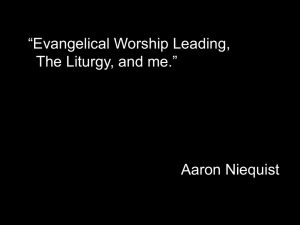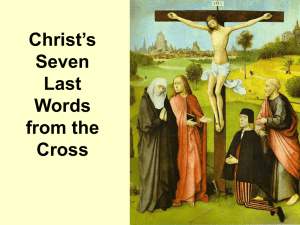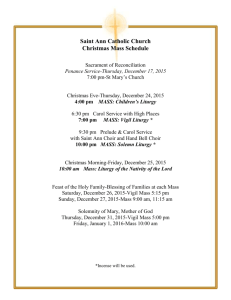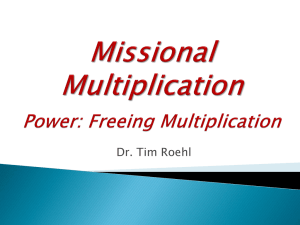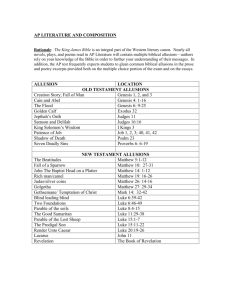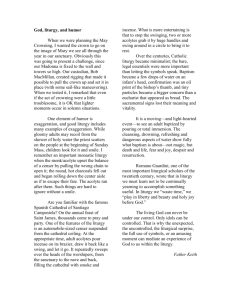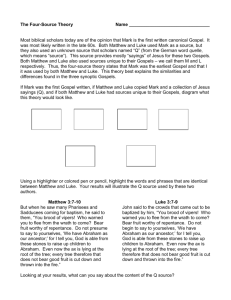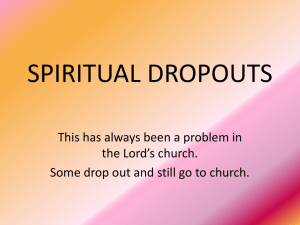Lecture 12 Liturgy a..
advertisement
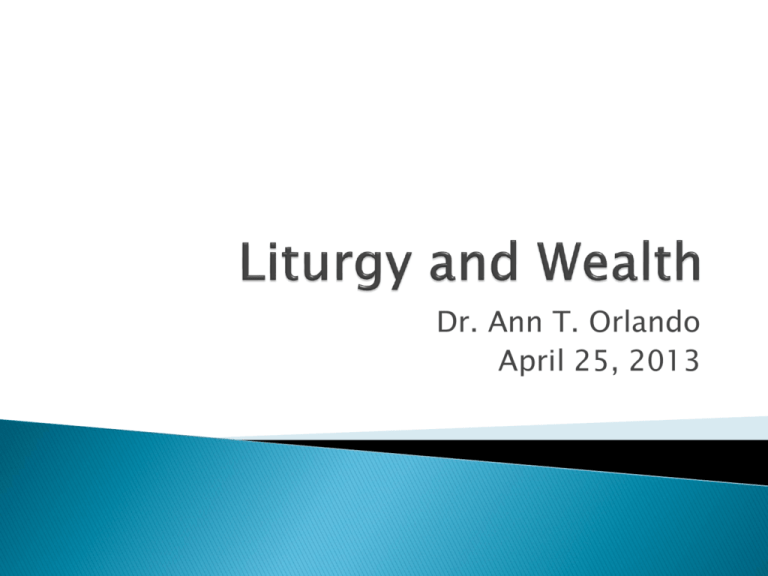
Dr. Ann T. Orlando April 25, 2013 Ancient Greek liturgy Ancient Christian liturgy Role of the wealthy Assignments NB See Theological Dictionary of the New Testament, Vol. IV, Gerhard Kittel pp215-231 Literally, “the work of the people” In addition to taxes, wealthy individuals were required to fund civic building functions and other services ◦ Same will be true in Roman society In popular usage takes general meaning of any service rendered because of one’s office or position to another ◦ Slave to master (Aristotle) ◦ Family members to each other Used only as a type of service owed to God In particular service of a priestly type as part of a ritual If service to others is implied, diakonos or a similar term is used No use of general type of service, such as used in ancient Greece ◦ Implication is that LXX authors/translators wanted an exclusive term for priestly ministry The people receive the benefits of the service, which can only be offered in sacrifice to God by the priest ◦ Benefit of God’s care ◦ Priest also includes peoples individual sacrifices and offerings as part of the leitourgia See Ex 28-29 Nu 25; Ez 40-46 Leitourgia and derivatives are used only 15 times in NT Hebrews has most frequent use (6 times) Paul uses it 3 times Luke/Acts ◦ Emphasis on Priesthood of Jesus Christ ◦ Emphasis on sacrifice of Jesus ◦ See Heb 1:14; 8:6; 9:21; 10:11 for examples ◦ Rom 15:27; 2 Cor. 9:12; Phil 2:17 ◦ Rom 15:27 and 2 Cor 9:12 both refer to collecting money as a “service” for the Church in Jerusalem ◦ In Luke (1:23) as prayer or ministry in the Temple ◦ In Acts 13:2 as gathering of Christians to pray Leitourgia is used in Didache to describe Eucharistic meal (15) Justin Martyr, First Apology, 61, 65 ◦ Description of Sunday Christian gathering and worship ◦ Note collection from wealthy to be given to the Church for distribution to poor by deacons One of two main liturgies in Greek Church ◦ Other is Liturgy of St. Basil the Great Probably was written by John Chrysostom ◦ Adaptation form older Syriac Eucharistic prayers ◦ Special Trinitarian emphasis, counter to Eunomians John was especially known for his preaching during the liturgy ◦ May have been the first bishop not to preach from his chair (cathedra) in the apse, but from the ambo ◦ John had a weak voice and wanted to make sure all could hear him ◦ Has become the practice ever since (East and West) A lengthy series of Homilies, probably written early during his tenure as Patriarch of Constantinople Fathers focused on Matthew and John ◦ Matthew and John understood to be direct disciples of Jesus ◦ Luke a disciple of Paul ◦ Mark, a disciple of Peter, seen as derivative of Matthew This tradition maintained in Church until liturgical revisions after Vatican II, into year A, B, C cycles ◦ Almost all readings taken from Matthew or John (Cycle A) ◦ Of course, we still read John exclusively for Holy Week John Chrysostom, Homily 50 on Mt 14:23-24 available at http://www.newadvent.org/fathers/200150.h tm Brown, Through the Eye of the Needle, Conclusion Compendium of Catholic Social Doctrine, 575-583 Write short paper: Daniel

